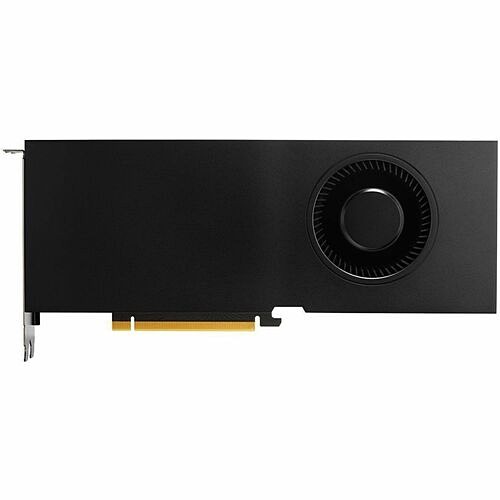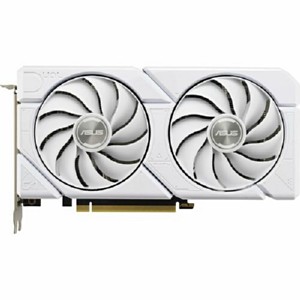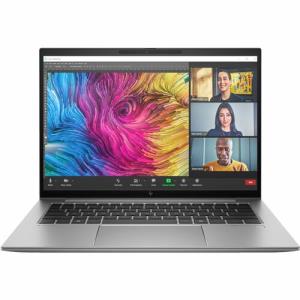NVIDIA NVIDIA Quadro RTX A5000 Graphic Card - 24 GB GDDR6 - Full-height/Low-profile - 7680 x 4320 - 384 bit Bus Width - PCI Express 4.0 x16 - DisplayPort - 4 x DisplayPort 900-5G132-2200-000-01
900-5G132-2200-000-01 | Nvidia®
New Listing!
Part Number: 900-5G132-2200-000-01
Condition: New
In Stock: 11
Real time availability 
Product Specifications
NVIDIA NVIDIA Quadro RTX A5000 Graphic Card - 24 GB GDDR6 - Full-height/Low-profile - 7680 x 4320 - 384 bit Bus Width - PCI Express 4.0 x16 - DisplayPort - 4 x DisplayPort 900-5G132-2200-000-01
NVIDIA RTX A5000 - BULK
Manufacturer Part Number: 900-5G132-2200-000-01
MANUFACTURER NAME: Nvidia
MANUFACTURER PART NUMBER: 900-5G132-2200-000-01
UPC EAN CODE:
LANGUAGE: EN
MARKET:US
| General Information: | |
NVIDIA RTX A5000 Graphics Card Perfectly Balanced. Blazing Performance. Spearhead innovation from your desktop with the NVIDIA RTX™A5000 graphics card, the perfect balance of power, performance, and reliability to tackle complex workflows. Built on the latest NVIDIA Ampere architecture and featuring 24 gigabytes (GB) of GPU memory, it's everything designers, engineers, and artists need to realize their visions for the future, today. Powered by the NVIDIA Ampere Architecture | NVIDIA Ampere Architecture-Based CUDA Cores Accelerate graphics workflows with the latest CUDA®cores for up to 2.5X single-precision floating-point (FP32) performance compared to the previous generation. Second-Generation RT Cores Produce more visually accurate renders faster with hardware-accelerated motion blur and up to 2X fasterray-tracingperformance than the previous generation. Third-GenerationTensor Cores Boost AI and data science model training with up to 10X faster training performance compared to the previous generation with hardware-support for structural sparsity. 24GB of GPU Memory Tackle memory-intensive workloads, from virtual production to engineering simulation, with 24 GB of GDDR6 memory with ECC. Virtualization-Ready Repurpose your personal workstation into multiple high-performance virtual workstations with support forNVIDIA RTX Virtual Workstation (vWS) software. Third-Generation NVIDIA NVLink Scale memory and performance across multiple GPUs withNVIDIA®NVLink™to tackle larger datasets, models, and scenes. PCI Express Gen 4 Improve data-transfer speeds from CPU memory for data-intensive tasks with support for PCI Express Gen 4. Power Efficiency Leverage a dual-slot, power efficient design that's 2.5X more power efficient than the previous generation and crafted to fit a wide range of workstations. Design Showcase: RTX All Stars See how 3D artists, architects, and product designers are using the powerful features of NVIDIA RTX™and Omniverse™to elevate graphics workflows-producing captivating work that has pushed them to the level of NVIDIA RTX All Stars. Multi-GPU Scalability | NVIDIA NVLink Bridge NVLink enables professional applications to easily scale memory and performance with multi-GPU configurations. With a low-profile design that fits into a variety of systems,NVIDIA NVLink Bridgesallow you to connect two RTX A5000s. This delivers up to 112 gigabytes per second (GB/s) of bandwidth and a combined 48GB of GDDR6 memory to tackle memory-intensive workloads. | |
| Manufacturer | NVIDIA Corporation |
| Manufacturer Part Number | 9005G132220000001 |
| Manufacturer Website Address | http://www.nvidia.com |
| Brand Name | NVIDIA |
| Product Name | NVIDIA RTX A5000 Graphic Card |
| Package Type | Bulk |
| Product Type | Graphic Card |
| Technical Information: | |
| API Supported | DirectX 12 Ultimate
OpenGL 4.6 Vulkan 1.3 DirectCompute OpenCL 3.0 |
| Multi-GPU Technology | NVLink |
| Number of Monitors Supported | 4 |
| Maximum Digital Display Resolution | 7680 x 4320 |
| CUDA Cores | 8192 |
| Features | AV1 Encode/Decode
VR Ready ECC CUDA Technology |
| AI-powered | Yes |
| Processor & Chipset: | |
| Chipset Manufacturer | NVIDIA |
| Chipset Line | Quadro |
| Chipset Series | RTX |
| Chipset Model | RTX A5000 |
| Memory: | |
| Standard Memory | 24 GB |
| Memory Technology | GDDR6 |
| Bus Width | 384 bit |
| Maximum Memory Bandwidth | 768 GB/s |
| Interfaces/Ports: | |
| Host Interface | PCI Express 4.0 x16 |
| DisplayPort | Yes |
| Number of DisplayPort Outputs | 4 |
| Power Description: | |
| Power Connector | 1x 8-pin |
| Physical Characteristics: | |
| Slot Space Required | Dual |
| Form Factor | Plug-in Card |
| Card Height | Full-height/Low-profile |
| Cooler Type | Active Cooler |
| Height | 4.4" |
| Length | 10.5" |
| Miscellaneous: | |
| Platform Supported | PC |
Questions and Answers
Questions and Answers | Ask CompSource |
Shipping / Returns
Shipping
Ground =
FREE
(EST. Arrival Date between
Wed.Nov.27 - Mon.Dec.2)
Two Day Air = $27.00
(EST. Arrival Date on Wed.Nov.27)
Standard One Day = $41.00
(EST. Arrival Date on Tue.Nov.26 after 3PM)
Priority = $70.00
(EST. arrival Date on Tue.Nov.26 in the AM)
U.S Mail Priority (AA,AE,AP only) = $34.00
FedEx International Economy (Canada only) = $87.00
Shipping dates are best estimates based on product location and may vary with holidays.
If product requires trucking, additional fees may apply.
* Some destinations are subject to Applicable State/Duty Taxes
Returns
CompSource realizes that every product may have different return guidelines. Please see the policy below regarding this item.
This Product Has Limited Exchange Privileges.
Limited returns within 30 days of purchase permitted on this product.
For support on this product, please contact Nvidia. http://www.nvidia.com/content/global/global.php
Nvidia Company's Information
Click Nvidia for all products
Local #: (919) 572-1370
Product Reviews
Overall Rating | Write a Review
|
|
Best Sellers
More Best Sellers
Recently Viewed
About Nvidia
Fueled by the massive growth of the gaming market and its insatiable demand for better 3D graphics, we've evolved the GPU into a computer brain at the intersection of virtual reality, high performance computing, and artificial intelligence.
NVIDIA GPU computing has become the essential tool of the da Vincis and Einsteins of our time. For them, we've built the equivalent of a time machine.
For 30 years, the dynamics of Moore's law held true. But now CPU scaling is slowing while the demand for computing power surges ahead.
With AI, now machines can learn. AI can solve grand challenges that have been beyond human reach, but it must be fueled by massive compute power.
Accelerated computing is the path forward beyond Moore's law, delivering 1000x computing performance every 10 years.
Our invention of the GPU in 1999 made real-time programmable shading possible, giving artists an infinite palette for expression.
In 2018, the introduction of the Turing architecture and NVIDIA RTX ray-tracing technology fulfilled another vision of computer scientists, paving the way to new levels of art and realism in real-time graphics.
We've led the field of visual computing for decades.
Turing-based Quadro RTX delivers photoreal graphics that creators didn't expect for another 5-10 years.
Quadro RTX GPUs can now accelerate photoreal rendering for large industries that previously only used CPU server farms: film, animation, architecture, product design, and others.
NVIDIA has reinvented computer graphics, again.
GeForce RTX has redefined what's possible in gaming. Real-time ray tracing and neural graphics processing come together to create eye-popping images and deliver a level of photo realism never before seen in PC gaming.
AAA games like Battlefield V, Shadow of the Tomb Raider, and Metro Exodus support RTX today. And with support in Microsoft DXR, Unreal Engine, and Unity, next-generation games can easily bring ray tracing to millions of gamers.
In 2006, the creation of our CUDA programming model and Tesla GPU platform brought parallel processing to general-purpose computing. A powerful new approach to computing was born.
Now, the paths of high performance computing and AI innovation are converging.
From the world's largest supercomputers to the vast datacenters that power the cloud, this new computing model is helping to answer complex questions, discover new science, and bring amazing capabilities to our mobile devices.
Now, the world's largest industries - transportation, healthcare, logistics, manufacturing, robotics, smart cities, retail - are tapping into accelerated computing to bring AI to the edge.
GPU acceleration is the most accessible and energy-efficient path forward for the world's most powerful computers. More than 600 applications support CUDA today, including the top 15 in HPC.
NVIDIA powers U.S.-based Summit, the world's fastest supercomputer, as well as the fastest systems in Europe and Japan. 27,000 NVIDIA Volta Tensor Core GPUs accelerate Summit's performance to more than 200 petaflops for HPC and 3 exaflops for AI.
Building amazing AI applications begins with training neural networks. NVIDIA DGX 2 is the world's most powerful tool for AI training, uniting 16 GPUs to deliver 2 petaflops of training performance.
In July 2019, DGX-2 set new world records in the debut of MLPerf, a new set of industry benchmarks designed to test deep learning performance.
Trained AI applications are deployed in large-scale, highly complex cloud data centers that serve voice, video, image, and recommendation services to billions of users. Hundreds of AI algorithms are in use today, making inference a big and costly challenge.
NVIDIA TensorRT software and the new T4 GPU converge to optimize, validate, and accelerate trained neural networks.
AI breakthroughs no longer come from scientific labs and hyperscale cloud providers alone.
Self-driving cars, automated farm equipment, and autonomous factory robots have moved quickly from ideas to reality. And it's only the beginning.
The fourth industrial revolution has begun.
Autonomous vehicles will revolutionize the $10 trillion transportation industry.
NVIDIA DRIVE is an open platform and enables researchers and programmers to develop new algorithms or adapt them for specific vehicles.
To train the network, data from all over the world needs to be collected and fed into an NVIDIA DGX supercomputer.
Simulation expands the training set and covers dangerous scenarios that can't be captured on the road. The trained model is deployed on an in-car supercomputer, for capabilities like pedestrian detection and driver monitoring.
NVIDIA is united by a unique culture - the operating system of our company. We dream big, take risks, and learn from our mistakes together. Speed is the key to our success. Craftsmanship is a passion. There are no org charts - the project is the boss.
These beliefs inform everything we do, from designing amazing products to building one of the world's great companies - a place where people can do their life's work.
CompSource is here to help you in your video decision. You can Chat with us or give our professionals a quick phone call (800)-413-7361, we can assist with the best solution for your needs and budget.
Learn more about Graphic Cards
What is a graphic card?
A video card (also called a display card, Graphic Cards, display adapter or graphics adapter) is an expansion card which generates a feed of output images to a display (such as a computer monitor). Frequently, these are advertised as discrete or dedicated graphics cards, emphasizing the distinction between these and integrated graphics. At the core of both is the GPU, which is the main part that does the actual computations, but should not be confused as the video card as a whole, although "GPU" is often used to refer to video cards.
Most video cards are not limited to simple display output. Their integrated graphics processor can perform additional processing, removing this task from the CPU. For example, NVIDIA and AMD (ATi) produced cards render the graphics pipeline OpenGL and DirectX on the hardware level. There has also been a tendency to use the computing capabilities of the graphics processor to solve non-graphic tasks, such as crypto mining!
Why Upgrade Your GPU or Graphics Card?
While most computers come with a built-in GPU (Graphics Processing Unit), video-intensive activities such as graphic design, HD video editing, animation and PC gaming will likely require a dedicated graphics card to provide the performance you desire. A more robust graphics card provides optimal graphics displays and faster refresh rates, for a higher level of realism with your games or detail in your designs.
For the most part, the more powerful the GPU you're using, the better the results. The performance indicator of each graphics card is identified by its model number. So generally, the higher the model number, the better performance you can expect from your video card. Also the more memory the graphic card has the better it will preform as well.
Choosing the Best Video or Graphics Card to Purchase
A good video or graphics card is essential for any computer system that is used for gaming, video editing, or any other intensive graphical tasks. With so many options available in the market, it can be challenging to choose the best one for your needs. In this blog post, we will guide you through the process of selecting the best video or graphics card to purchase.
Compatibility
The first and most important thing to consider is compatibility. Not all video or graphics cards are compatible with all systems. The compatibility is determined by the PCIe slot type, the Power Supply wattage, and the physical dimensions of the card. Before purchasing a card, you should check your system's specifications to ensure that it is compatible with the card you are considering.
Performance
The second most significant factor to consider is performance. A good graphics card should be able to handle the graphical demands of the latest games and software without any lag or stutter. To determine the performance of a graphics card, you should check its clock speed, memory bandwidth, and the number of cores. The higher these numbers, the better the performance.
Brand
The brand of the graphics card is also an important factor to consider. Popular brands like NVIDIA and AMD are known for their high-quality graphics cards and excellent customer support. These brands have a wide range of options to choose from, and you can be assured of getting a card that is reliable and performs well.
Cooling
Graphics cards generate a lot of heat during use. Therefore, it's essential to consider the cooling mechanism of the card. A good graphics card should have an efficient cooling system to prevent overheating and to ensure that the card functions optimally. Look for cards with large heatsinks, multiple fans, and Liquid Cooling systems.
Price
Finally, you should consider the price of the graphics card. Prices can range from a few hundred dollars to thousands of dollars. While it's tempting to go for the most expensive option, you should consider your budget and your needs. A mid-range graphics card will perform well for most users and is more affordable. That being said, if you are a gamer or work with CAD etc. you do get what you pay for!
Conclusion
Choosing the best video or graphics card to purchase requires careful consideration of the compatibility, performance, brand, cooling, and price. By taking these factors into account, you can ensure that you get a card that meets your needs and performs well for the tasks you intend to use it for. Remember to research and compare different options before making a purchase to get the best value for your money.
CompSource is here to help you decide. You can also chat with us or give our professionals a quick phone call (800)-413-7361, we can assist with the best solution for your needs and budget.Could not have been more happy. They say you get what you pay for, but i disagree. I got my product marked down over 30% with free shipping, and i couldn't be happier. Product exceeds expectations, pre assembled and packed very carefully. I would recommend this site to anyone. Five Stars! AnonymousMore Reviews






















